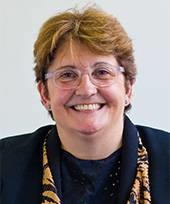
It is time to challenge the injustice of the current prevailing view of social mobility, that the vulnerable and disadvantaged have somehow failed and they should become more middle class, pass the required number of exams followed by university. In contrast we should reflect on the thinking and action needed to change if every child is to be included, regardless of their background, challenge or need. I argue that our change-making focus must be upon the following:
Improving Early years provision: In England, Sure Start Children’s Centres were the main vehicles for ensuring excellent quality family services and provision were located in accessible places and welcoming to all. The aim for every Sure Start Centre was to improve outcomes for all children and families. There are some fine nursery settings that take that approach today. If we want all families to fully participate in early years we need to share the benefits of early years education by building a respectful relationship with families to help ensure growth and school readiness.
Building a relevant curriculum: Pupils who have barriers put before them will never succeed. The school curriculum needs to be relevant and attainable, not divisive. To succeed in school every child needs to be included. A curriculum that is not socially and culturally relevant, and which presents more barriers than opportunities simply will not engage children in learning.
The current national curriculum in England is cast in a middle-class mould. There are solutions to this dilemma that, if implemented, would address the needs of all children. The first is to break down the barriers to learning by providing opportunities for all children to participate in social and cultural activities, sport, the arts, debating, volunteering, wider community-based provision, museums, trips and much more.
The second requires us to relate the curriculum to the social context of the child and their future. All communities have a rich heritage, which can provide significant resources. In terms of their future, learning about the workplace can begin in primary school, increasing ambitions, breaking down barriers, and providing relevance to learning. Increasing access to learning for all children should be the benchmark of a successful school. A considered, realistic approach to improving outcomes for all pupils is needed, using evidence-based programmes such as Achievement for All to provide support for leaders and teachers at this critical time. The gap has been closed where this support has been embedded.
Improving teaching: The need to understand how and why children can learn is fundamental to pedagogy – to understand how teachers teach. Getting teaching right for the vulnerable and disadvantaged remains an ongoing challenge in many schools. An appropriate starting point would be to increase understanding of how disadvantaged children and those identified with special educational needs or disabilities learn and refocus teacher and professional training on the majority of the population in schools, identifying what is needed to prepare children for work. It is also about changing the
mindset of the adults and services around the school to improve the outcomes for all children. I have long since known that if you change the attitudes and behaviours of adults you improve the attitudes and behaviours of the child.
Widening our focus to ask why success is only measured by exam results? The annual media frenzy that follows primary phase national curriculum assessments (SATs) and secondary phase GCSE exam results only serves to remind most vulnerable and disadvantaged children they have failed to achieve government expected levels. EPI’s Closing the Gap research6 reminds us that it will take decades to close the gap, which includes reference to special educational needs. A more meaningful assessment at secondary phase would be destination outcomes: measuring student’s outcomes by where the examinations take them. This would be complementary to recent research and theory on the changing skill needs of business and industry.
Consider the future that children and young people will live in…
The Problems of Designing a Future
It is very difficult to predict — especially the future-Commonly attributed to Neils Bohr (Physicist). Quite simply, we cannot design an education system that would preempt the challenges of the future. If we attempted to do this, the only resource available to us is our understanding of now, projected forward. History demonstrates that this resource will always be insufficient for the task: even the best-informed projection will be wrong, to a greater or lesser degree. For example, in 1964, the writer Arthur C. Clark predicted with alarming accuracy the online world of 2014 and changes to employment. However, Clark also predicted with equal confidence the universal delegation of manual work to trained chimpanzees.
The best evidence we have suggests that the most effective support that we can give to young people to meet the challenges of tomorrow is to embed pedagogies and practice that could be described as future-aware. Future-aware pedagogies support young people to develop the mindset, capacities, and characteristics required to meet new challenges as they arise, and on their own terms. These include:
- Effective collaboration
- Being able to reflect on, and extend knowledge
- Self-regulation and self-development
- Research and problem-solving skills
- Effective use of technology
- Communication
- Creativity and innovation
- Metacognition
- Grit and resilience
These pedagogies underpin the need to build the core strength of every child or young person. Core strength, defined as a future-aware concept is the confidence and ability to learn, develop and participate in society, where children and young people are supported to identify themselves in terms of: Aspiration, I CAN; Access, I DO; Attainment, I HAVE and Achievement, I AM.
Register for free
No Credit Card required
- Register for free
- Free TeachingTimes Report every month